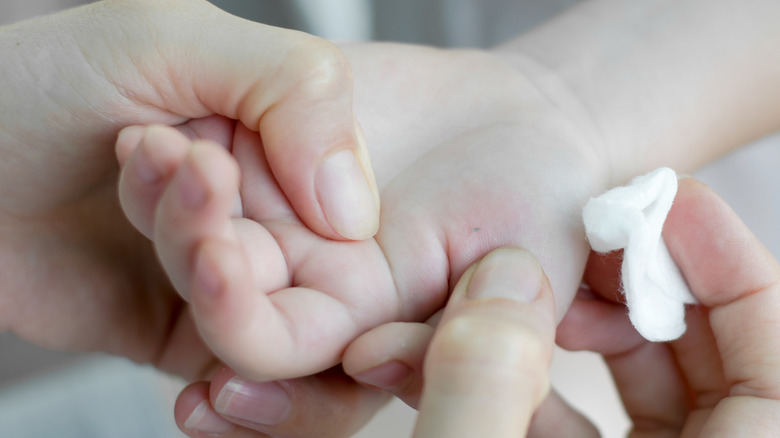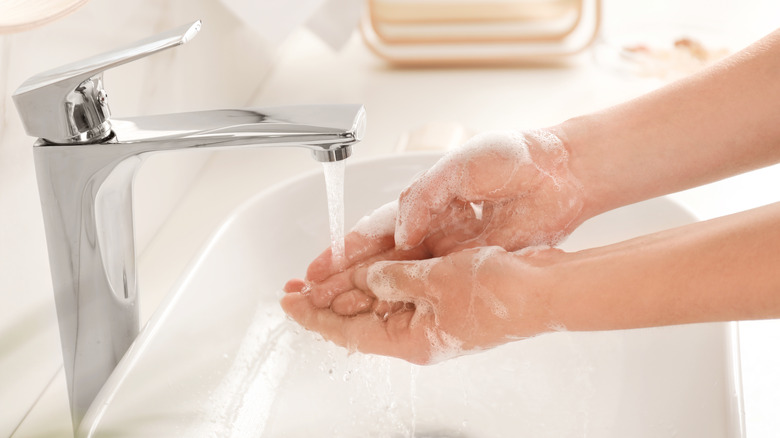The First Thing You Should Do If You Get A Splinter
Nothing ruins a "Risky Business"-style slide across the floor in your socks like an unwelcome splinter. A splinter occurs when a small sliver of material, often wood, becomes lodged in the skin (via MedicalNewsToday). Other common materials that can cause splinters include glass, thorns, or metallic substances (via American Family Physician).
There are different levels of severity when it comes to splinters, and it depends on how deeply embedded the material is within the skin's layers. More superficial splinters exist near the skin's surface and can often be removed with tweezers, while deeper splinters may be embedded near nerves, blood vessels, tendons, or essential organs. In these cases, they may require medical assistance for removal (via American Family Physician).
When removing a splinter, there are a few things you'll want to keep in mind, such as the direction of the splinter, the size of the embedded material, and the location of the splinter (via MedicalNewsToday). Before you reach for those tweezers, however, there's another step you'll want to take first.
Don't reach for tweezers just yet
"Skin is a physical barrier that prevents infections," certified nurse practitioner Ashley Jones told LiveScience. Jones went on to explain that when the skin is punctured, it "makes it easier for bacteria outside of the skin to actually get under the skin." According to Shuman Podiatry, such punctures can result in fungal nail infections, among other health conditions.
For this reason, it's important to prep the area thoroughly by cleaning the wound. The first thing you should do is wash the area with mild soap and water (via WebMD). For minor splinters, allow the body to naturally push it out on its own. For those that are painful, try adhering a piece of tape to the area and gently pulling it away to remove the splinter. For splinters that are poking through the skin, sanitize a pair of tweezers with alcohol, carefully grasp onto the exposed end of the splinter, and pull it out. If the splinter is embedded beneath the skin, use a sanitized needle to peel back the skin, following the direction of the splinter. After enough of the splinter is exposed, remove it with the tweezers. Clean the area again, apply antibiotic ointment, and cover it with a bandage.
In the event that you're unable to remove the splinter, the area is bleeding heavily, or the material is inaccessible, visit your doctor for assisted removal.


